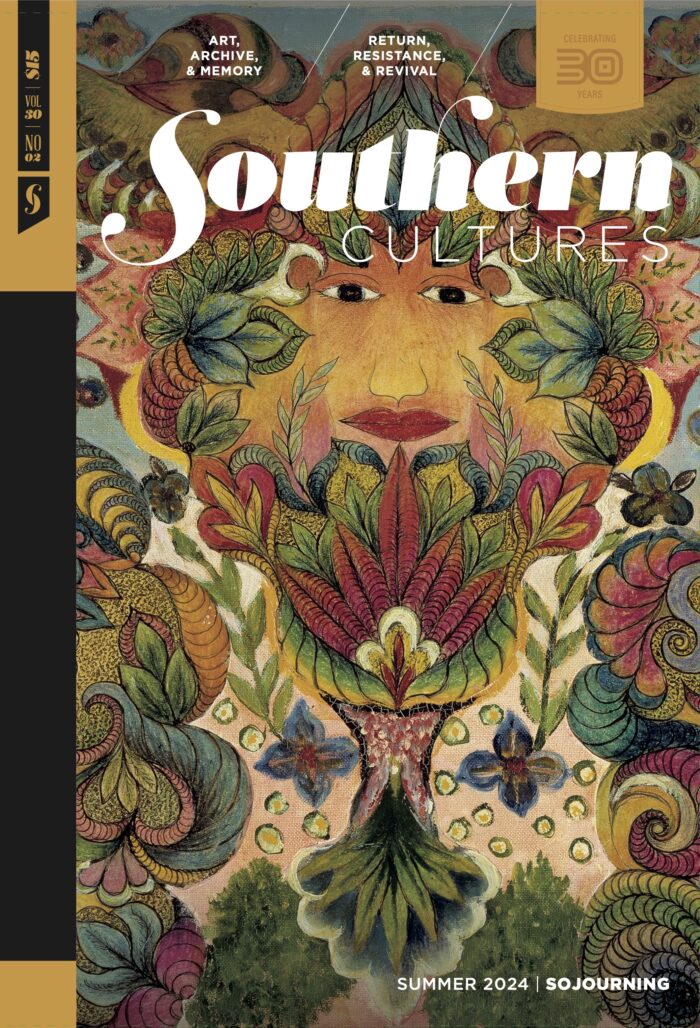“The photographs and items my mother brought back with her from Texas tell her migration story, connecting me to the people, places, and events that shaped her life and echo in mine.”
In the summer of 2015, my parents rented an RV and traveled from the Bay Area to Fort Worth, Texas, just south of where my mother was born. While she was there, my mother picked up a box of mementos from her brother’s widow, my aunt Shirley. Upon their return, my parents visited me and my husband in Southern California, and my mother brought the box of memories into the house. She took out a brown leather photo album bound with a wax-coated rope, placing it on the kitchen table as she gingerly untied it to reveal its oxidized pages. It was the first time I had ever seen images of my mother as a child. These photographs opened up a new portal to our family history, starting with my mother, Betty Ann; then her mother, Frankie Lavelle Lydia; her father, Moffett Clayborn; his mother, Annie Mae; and his father, Gilford Clayborn. This link extends all the way to the wedding year of my great-great-grandfather Ned Moffett Sr. in Gainesville, Texas, circa 1866, one year after Union soldiers read federal orders to enforce the Emancipation Proclamation in Galveston, Texas—an event we now celebrate as Juneteenth.
The objects we hold dear are facsimiles of memory. The photographs and items my mother brought back with her from Texas tell her migration story, connecting me to the people, places, and events that shaped her life and echo in mine. In one picture, she is standing in front of a midcentury television cabinet, wearing a tulle pancake tutu, with her little feet in ballerina slippers and her knees hyperextending the same way mine did at that age. She’s turning one of the TV knobs, calling the camera’s attention to the new appliance and its pride of place in their home, flanked by two long floral drape panels in the living room, one of her favorite spaces in the house. It was the first television the family ever purchased. My mother once recalled how her father would take her and her brothers out for evening drives, and one night he surprised them as they returned home to the cool blue glow of the new set illuminating the room, greeting them with Perry Como on the screen.
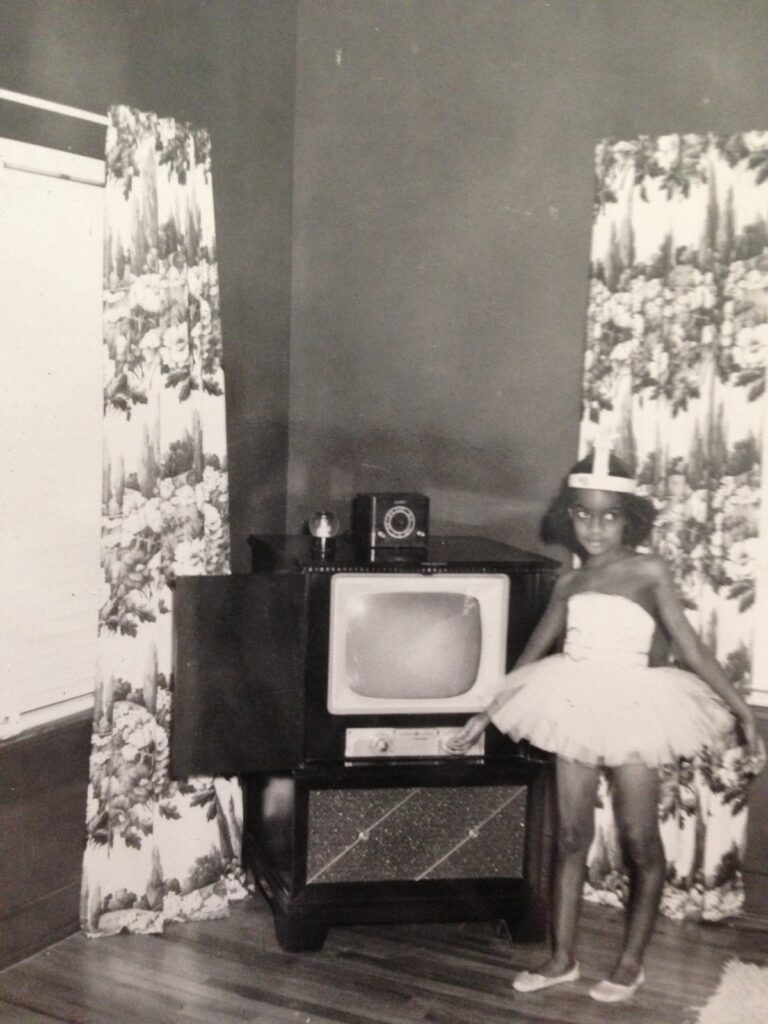
In another photo, she is bouncing a small ball in a hallway. She is wearing pedal pushers, moccasins, and short pigtails in her hair. I took a mental inventory of other photographs: the gorgeous chiffon dresses and long satin gloves worn to school dances, the epaulets on her band uniform. These details brought into focus places and people foreign to me. One of my favorites, a photograph of a Christmas tree glistening with long strands of tinsel and recently opened Christmas gifts neatly laid out under the tree, reminded me of the holidays my parents and I shared in Concord, California. The vignette evoked an old favorite photograph by James Van Der Zee of a Harlem family on Christmas Day, circa 1933.
How do we connect to the past when our histories are hidden, erased, or silenced? In the absence of these newly discovered photographs, images like the one by Van Der Zee helped fill the visual narrative gaps in my maternal family’s archive, which was stored away for decades. Art has always been an important link to this realm, “a portal,” notes artist Sanford Biggers in reference to the role quilts play as repositories of memory. Now, these rediscovered photographs of my mother add character and dimension to her life, connecting the dots between the stories she shared about her experiences in the South and the visual construction of these events in my mind’s eye. These images also help me tap into my own memories formed during my visits to Texas as a child.1
Growing up, I visited North Texas with my mom four times to see family. Seared into my subconscious are sensory elements that connect me to my mother’s childhood home in Gainesville, a former cattle town roughly seven miles from the Oklahoma border: the cool air blowing from a window air-conditioning unit that lulled me to sleep on a humid summer evening, the shooting pain from the itchy sting of dozens of chigger bites on my legs from playing in the tall grass, the heat from large pots of water boiling on the stove for a morning bath, the faintly sweet smell of vanilla wafers that gently wafted from the pantry, creating a scent memory I’ve been chasing my entire life.
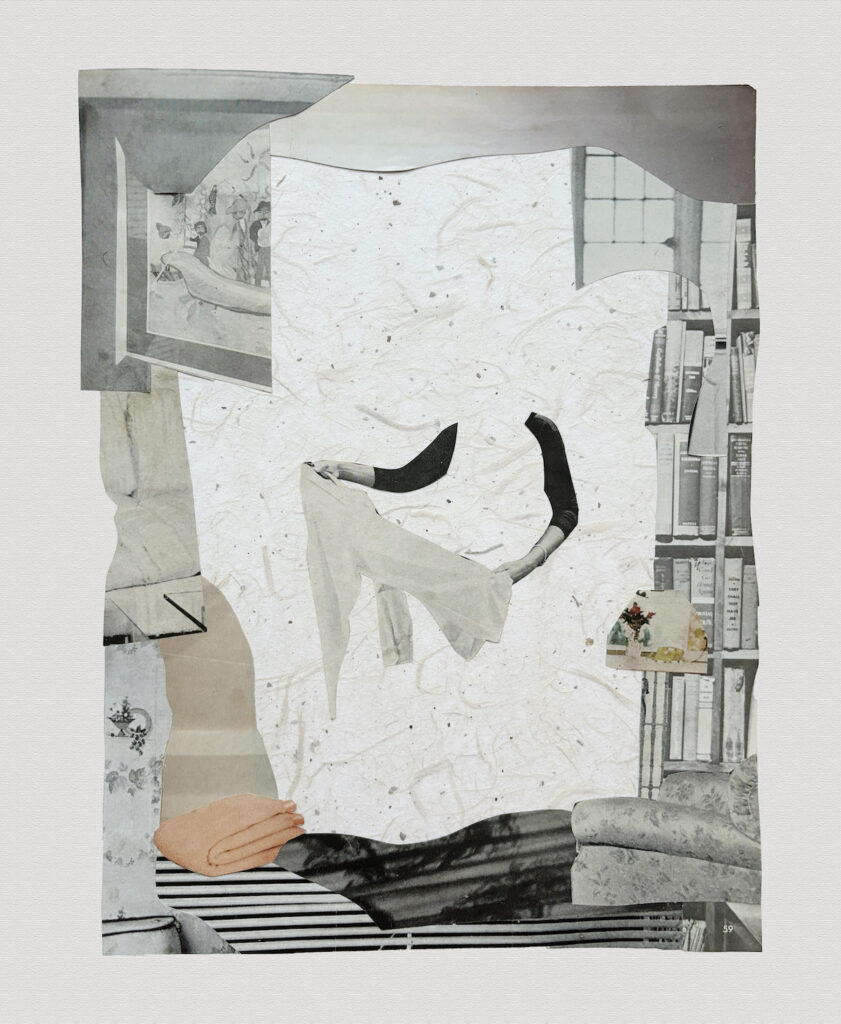
My mother’s own sensory memories are triggered in fleeting moments: The sound of the wind rustling through the trees evokes the gentle breeze floating through her bedroom window in the morning. Listening to “My Baby Loves Me,” by Martha and the Vandellas, on the radio takes her back to cruising around town with her best friends in a yellow and green 1954 Chevy that they nicknamed “the Flash,” and the time Grandpa hit the streets hunting her down after she missed curfew. In my mom’s photo album, her father and her stepmother stand in front of the Flash parked in the dirt gravel road in front of her childhood home.
What’s hidden behind these anodyne archival photographs are the complicated forces that compelled my mom to leave Gainesville, Texas, in 1966—the asterisk is the color line. There are no photos to accompany the memories borne out of the physical and psychological trauma of Jim Crow; instead, there are oral snapshots: seeing movie matinees from the colored balcony of a theater accessed by an outdoor staircase; buying a hot dog from the colored entrance of the drug store, only to discover it was bad, but knowing that any attempt to return the rotten meat would be immediately rebuffed by the white store clerk; swimming in the segregated pools that limited summertime admission to a single day for Black children, relegating them on other days behind a chain-link fence to watch white children play and splash from afar.
Art became a visual surrogate for this oral history. A 1956 photograph by Gordon Parks, titled Outside Looking In, shows six children looking through a chain-link fence at a white playground in Alabama where access is denied to them. It’s easy to place my mother among this group of children navigating the unwritten rules, codified laws, and violent social codes that permeated the South. What’s bound together with this racial subtext is a complicated family dynamic that originated with the dislocation of her stepsiblings.2
My mother’s mother, Frankie Lydia, died when my mom was two years old. Frankie Lydia had six children of her own when she married my grandfather Moffett, and they had two children together: my uncle Gilford and my mother. On her deathbed, my grandmother asked my aunt Velma to take care of my mom, the baby of the family. My grandfather Moffett understood the magnitude of this sacrifice—staying in Gainesville would conscript my aunt into a life of very few opportunities. Instead, he chose to keep his two young children and my uncle Ronnie with him, and as a result, the rest of the family was forced to separate, migrating to other parts of Texas, Arizona, California, and Washington. Eventually, my three aunties settled in Oakland, California, where my grandfather would send my mother in 1966, in the wake of the assassination of John F. Kennedy in 1963 and the murder of Malcom X in 1965, encouraging her, as he did my aunt Velma, to pursue a life beyond what was possible in Gainesville.
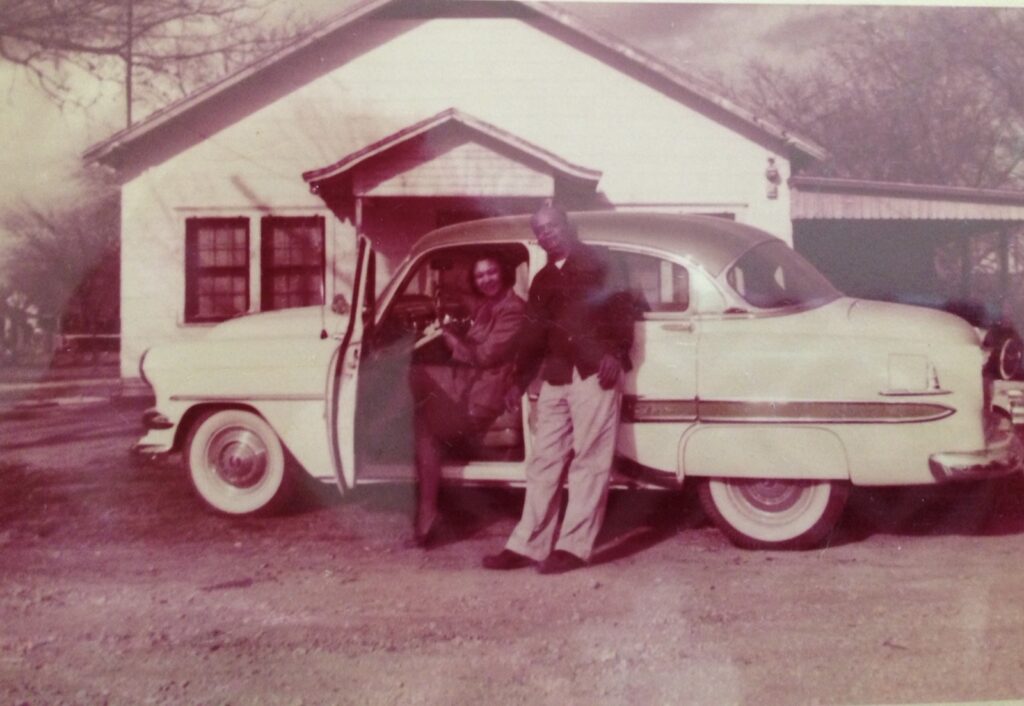
My mother boarded a bus to Oakland, where she was reunited with her sisters, but she quickly got homesick and returned to Gainesville. One year after her return to Texas, she ventured west again and didn’t look back. When my mother came to California, she carried this history with her, eager to shed its weight. She quickly lost her accent, and then she went to modeling school, where she developed her keen eye for fashion. She met my father, got married, had a daughter, and fostered a love for learning that would earn her two degrees while she built a successful corporate career. Recalling her past is painful—her memories of the South are bookended by the loss of her mother and the Texas she left behind in 1967. Revisiting those memories is extremely rare for her.
One day, when I was a teenager, I was sitting at the kitchen table in my aunt Cill’s house in San Francisco as she was making a roux. Cigarette smoke wafted in the air while my mom and my aunts shared stories about the dislocation of the family. As they talked about their years of separation, the chasm between memory and perception grew, triggering emotions that percolated to the surface. In that moment, grief, abandonment, jealousy, and trauma jumped into that pot with the roux my aunt was stirring. There’s a gulf between what one chooses to remember and what one wills oneself to forget. It was too painful to probe more deeply; instead of looking at that gulf, they deflected with humor to divert our attention. My aunt Pron broke the tension by cracking jokes, mimicking the way my mom playfully laughed and cooed as a baby. And with that, we ushered in a new era of silence.3
I find myself returning to the words of bell hooks, who challenged us to reckon with this hidden trauma: “shame-based memory of both past and present domination and subjugation of black people by white people has led to a deep silence which must be continually broken if we are to ever create here in our native place a world where racism does not wound and mark all of us every day.” Flight and silence are fear and trauma responses. Lifting that veil of shame requires that we take a deep look at our past and find the joy and beauty that was created in spite of it. I connected with this beauty in 2015.4
These recovered photographs began to break that silence, giving my mother the space to gently return to these memories. In the photo of my mom’s childhood Christmas tree, a large doll wearing a chiffon dress and bonnet sits on display beneath the tree limbs. Growing up, my mother adored dolls, yet the joy of childhood play was truncated to make way for work. When she moved west, she held onto one keepsake—a small Native American doll that she now has tucked away in a dresser drawer. When I was little, I would sneak a peek at that doll every once in a while, curious about her origins. What I didn’t know was that the picture of my young mom bouncing a ball in the hallway in pigtails was taken the year her father and stepmother decided she was too old to play with dolls. Their absence under the Christmas tree was palpable that year. The melancholy of this one memory conjures the phantom sting of others, harkening back to the distanced relationships and strained silences she carried with her over the years. The photographic archive became a mirror and balm, prompting a reflection of her past that she now felt comfortable sharing with me, while also creating space to heal old wounds.
During their 2015 road trip to Fort Worth, my mother and father traveled an hour north to Gainesville to visit Moffett Park, a small recreational area adjacent to the Elm Fork of the Trinity River. Next to the park, they found a historical marker that read:
The owner of 90 acres in this vicinity, Missouri native Ned Moffett, Sr. (1842–1924) wed Mary Stone on April 19, 1866. The couple had nine children, and early census records listed the family as Mulatto. The Moffetts permitted use of this property along Elm Creek for celebrations by local African American citizens, and in 1943 the City of Gainesville bought the land from heirs to form Moffett Park. The first large social event in the new park was the 1944 Juneteenth celebration. Recreational facilities eventually included playground equipment and a pool. Following integration of nearby Leonard Park in the mid-1960s, the site declined in use, but it remains an important reminder of the city’s past.
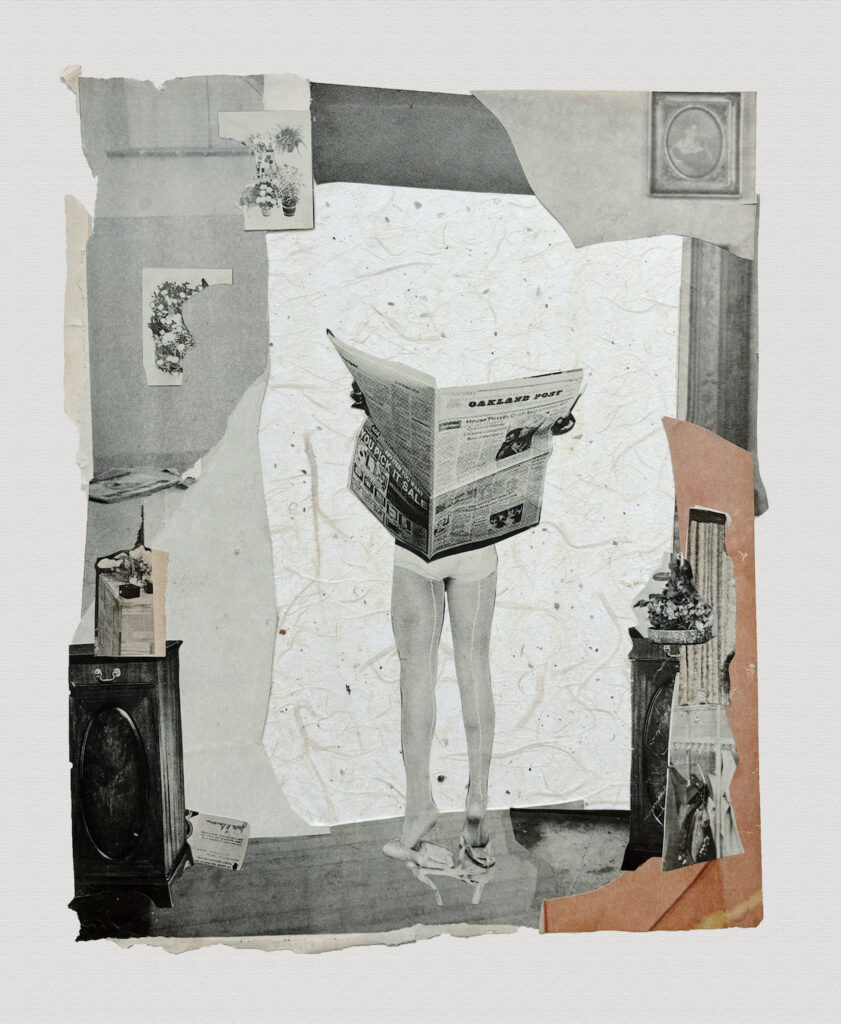
As she recalled the Moffett Park sojourn at our kitchen table in Southern California, my mom took out her phone and showed me a picture of the historical marker, and the sight of it immediately blazed a new trail of curiosity for me. She then pulled out from the brown leather photo album a cabinet card of a sharply dressed light-skinned Black man wearing a three-piece suit with a piped lapel; his ensemble was accessorized with a silk ascot tie and finished with a white pocket square. The portrait was of my great-great-grandfather, Ned Moffett. My mom proceeded to uncover more cabinet cards of Ned Moffett’s children, including my great-grandmother Annie Mae, and a photograph of a precious baby boy with unmistakable eyes, her son Moffett, my grandfather. My people. That was the day my universe exploded and a portal to my ancestors opened.
The day after my mom and dad returned to the Bay Area from that fated road trip to Texas, I spotted something high on the ceiling of my closet—a small scorpion had hitched a ride with my parents in a souvenir bag somewhere along their trek in the RV. My reaction to that scorpion was to see it as a harbinger of doom, but now I know scorpions are also symbols of change and new beginnings.
In 2019 I returned to the South, on a journey that continuously asks more than it answers—I welcome the abundance of both. I’ve been waiting for the right moment to return to the day my mother shared these photographs with me at our dining room table in California in 2015. Now feels like the right time.
Many questions about my maternal family remain: How did Ned Moffett acquire the land that led him from Missouri to Texas to Mary Stone, whom he wed in 1866? What were the circumstances behind the slow chiseling away of Black land ownership that dwindled from ninety acres to a historical marker? In the absence of complete answers, I continue to let art fill those gaps, creating space for the imagination to allow our ancestors to be heard, remembered, and seen.
Colony Little (she/her/hers) is the creator of Culture Shock Art, a site dedicated to the synergies among art, music, and design. Little writes to amplify the artistic voices of Black creators who are influenced by and create work in the American South. Writing credits include Artnet News, ARTnews, The Art Newspaper, ARTS.BLACK, Carla, Hyper-allergic, W, and Walter.
Header image: Detail from Shadows by Way of the Light (from the Interiors series), by Shefon N. Taylor, 2024. Collage on paper, 14 × 11 in. Courtesy of the artist.
NOTES:
- Siddhartha Mitter, “Cracking Codes with Sanford Biggers,” New York Times, August 14, 2020, www.nytimes.com/2020/08/14/arts/design/sanford-biggers-quilt-bronx-museum.html.
- Gordon Parks, Outside Looking In, Mobile Alabama, 1956, Gordon Parks Foundation, https://www.gordonparksfoundation.org/gordon-parks/photography-archive/segregation-in-the-south-1956?view=slider#5.
- “What is it we choose to remember about the past and what it is we will ourselves to forget?” Saidiya Hartman, “A Journey Along the Atlantic Slave Route,” Narrative, May 3, 2023, https://www.narrativemagazine.com/issues/winter-2007/nonfiction/journey-along-atlantic-slave-route-saidiya-hartman.
- bell hooks, Belonging: A Culture of Place (New York: Routledge, 2009), 175–176.

